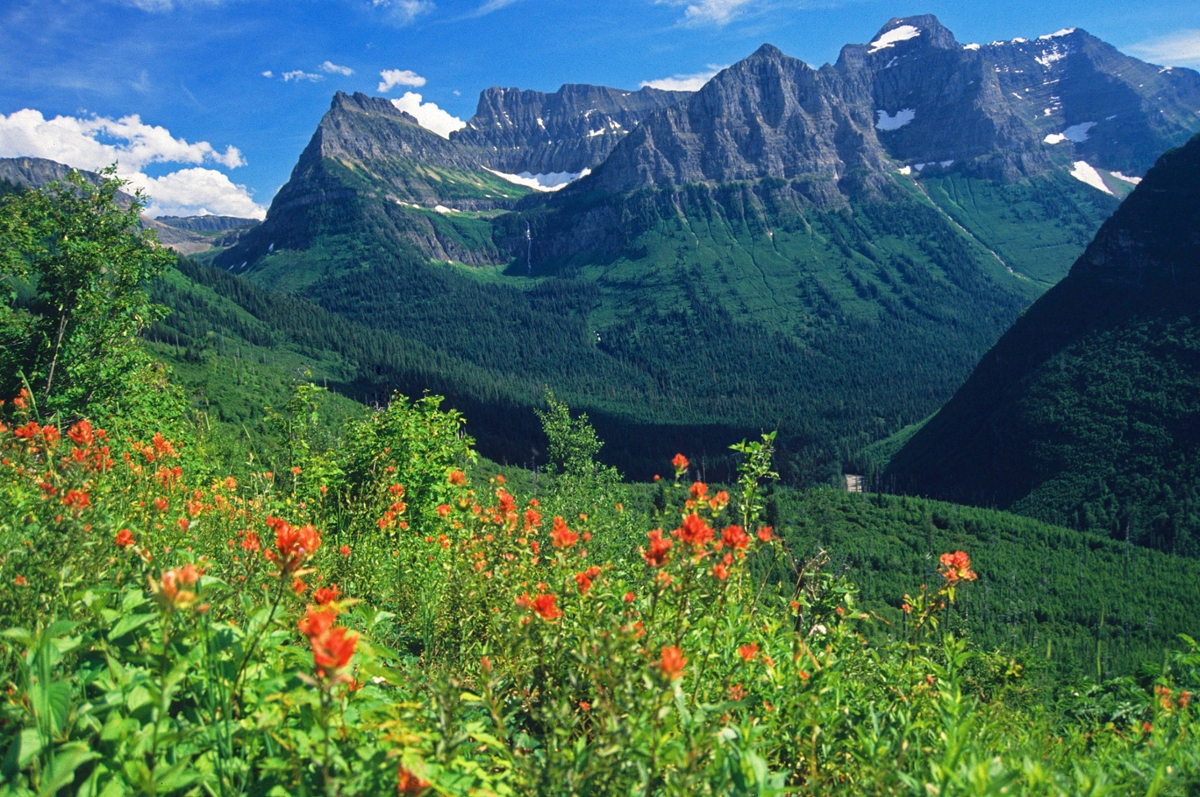Public Invited to Participate in Wildlife Research as Citizen Scientists
 Bird Woman Falls in Glacier National Park (Photo by Rick and Susie Graetz)
Bird Woman Falls in Glacier National Park (Photo by Rick and Susie Graetz)
Many Research Learning Centers across the country provide opportunities for the public to actively participate in scientific data collection in an increasingly popular pastime known as citizen science. Citizen science engages volunteers of all ages, some with little or no prior scientific training, in collecting scientific data related to important issues faced by the parks.
Citizen scientists in national parks get out in the field, gain deeper knowledge about the resources in the parks and contribute valuable information to assist the parks and monuments they love. Many participants report a greater awareness of contemporary issues, increased appreciation of the value of park resources and a stronger sense of resource stewardship. For the National Park Service, citizen science provides a wealth of much-needed baseline data about key resources that can be used in planning management actions.
The Crown of the Continent Research Learning Center announces a summer long National Park Service Centennial BioBlitz at Glacier National Park. Visitors to the park are invited to become citizen scientists by documenting wildlife sightings within GNP on the free iNaturalist app. The public may also sign up for a free account from their computer at http://www.inaturalist.org/.
The BioBlitz iNaturalist project “Glacier Wildlife Observations” takes place May 1-Sept. 30. Observation data recorded between Friday, May 20, and Sunday, May 22, will be displayed in real time on a “jumbotron” at the Biodiversity Festival on the National Mall in Washington, DC. “All interested visitors to Glacier National Park are encouraged to document wildlife sightings within the park during the NPS Centennial summer,” said Tara Carolin, director of the Crown of the Continent Research Learning Center. “No animal is too large or insect too small. We are interested in every kind of fauna visitors may encounter during their summer visits to Glacier. Once you #FindYourPark, we invite you to #FindOurFauna.”
The National Park Service has planned a shared nationwide quest to discover and document biodiversity. More than 100 parks across the country will host BioBlitzes, with many occurring simultaneously during the week of May 16–22. The national bioblitz and the National Biodiversity Festival in Washington, D.C., are cohosted by the National Geographic Society and the National Park Service at Constitution Gardens on the National Mall.
A BioBlitz is an event which brings together professional species experts and members of the public to inventory biodiversity in a specific area. The park service envisions creating a new generation of citizen scientists and stewards through biodiversity discovery. Hundreds of national parks have participated in past biodiversity discovery efforts of various sizes and scope, resulting in the discovery of more than 8,400 species, including species both new to the parks and science. Since 2005, Glacier’s Citizen Science Program has used citizen scientists to collect population data on species of interest in the park. The program provides valuable data to park managers and helps create an informed group of visitors involved in active stewardship of the park.
Funding and support for the Crown of the Continent Research Learning Center’s Citizen Science Program is provided by the Glacier National Park Conservancy. For more information on the Citizen Science Program, contact call 406-888-7986, email Glac_Citizen_Science@nps.gov or visit http://www.crownscience.org/getinvolved/citizen-science.
Department of Geography | University of Montana
